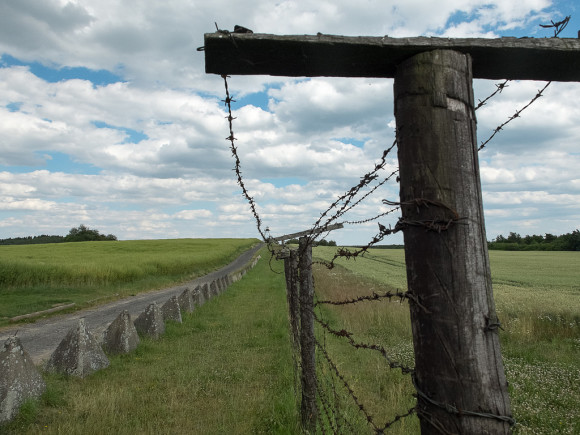
How the death strip became the European lifeline

Photo credit: Flickr Ebs Els
On Monday 21st July, the German Green MEP Michael Cramer and the Austrian EU Commissioner Johannes Hahn met at the EU House in Vienna to present the Iron Curtain Trail project. In order to develop cycling tourism on the Old Continent, the European Union gave its full support to the trail which is also known as EuroVelo 13.
Michael Cramer who has recently been elected chairman of the transport and tourism committee (TRAN) at the European Parliament introduced the Iron Curtain Trail project to a wider public in Vienna as well as presenting the new edition of his guidebook from Hof (Germany) to Szeged (Hungary). During the press conference, the German MEP and the Austrian EU Commissioner for Regional Policy insisted on the numerous benefits of the Iron Curtain Trail on local economies, the environment and also on the European ties it creates.
The two European officials also presented European plans to promote and develop EuroVelo 13 – Iron Curtain Trail. It has therefore to be noticed that the European Union has already financed (€ 1.2 million), the development of the trail from the Austrian-Slovakian border to the Black Sea through the South East Europe Interreg programme. In addition, under the preparatory action “Sustainable Tourism” a new €332,000 project - which officially started on 1st April - will allow the development of promotional packages on the Northern part of the route, from the Czech-Austrian border to the Barents Sea.
The Iron Curtain Trail, a unique experience
From the Barents Sea on the Norwegian-Russian border to the Black Sea coast where Turkey and Bulgaria meet, EuroVelo 13 – Iron Curtain Trail follows as closely as possible the international borders which used to divide Europe into two blocks during the Cold War. Passing through 20 countries, EuroVelo 13 – Iron Curtain Trail is the longest of all EuroVelo routes at 10 400 km.
The Iron Curtain Trail enables Europeans to cycle in the tracks of the history of a divided Europe. Thus, following a unique protected “Greenbelt”, the itinerary goes through some of the most significant places of the recent European History such as the Solidarnosc Center in Gdansk (Poland), the monument to victims of the Iron Curtain in Cheb (Czech Republic) and the lot of watchtowers and fortifications located along the trail.
Who said European History and cycling are incompatible?
- Log in to post comments
Contact the author
Recent news!
Upcoming events
Contact Us
Avenue des Arts, 7-8
Postal address: Rue de la Charité, 22
1210 Brussels, Belgium









